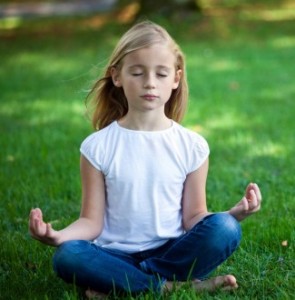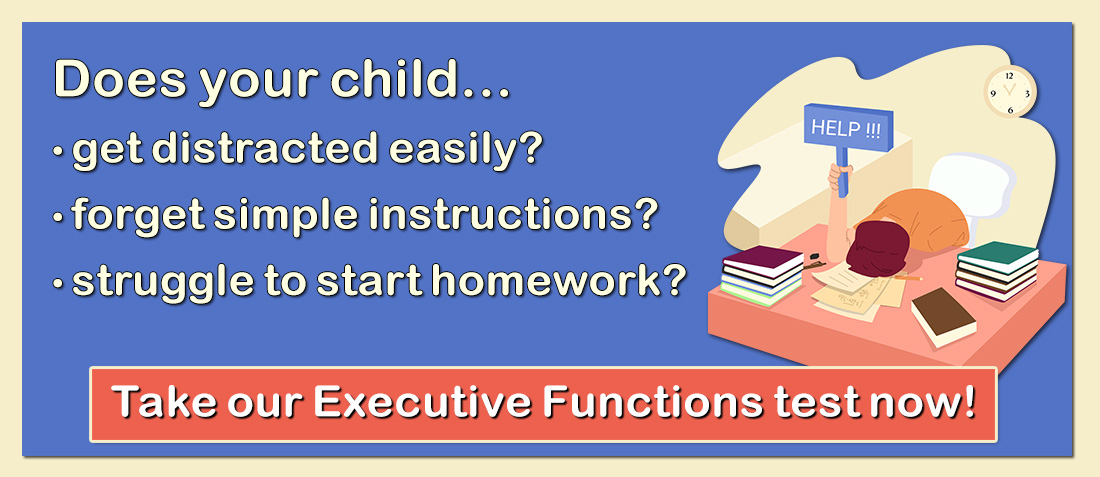 Anxiety is a state of restlessness and agitation that is often brought about by the anticipation of a future (real or imagined) frightening event or situation. Anxiety can be observed as worry, restlessness, physical tension, uncertainty, and “nervous energy.” It is sometimes accompanied by physical symptoms such as: nausea, headaches, increased heart rate, sweating, tension, and chest pain. Everyone experiences anxiety to a degree; it is normal and crucial for human survival. However, if the symptoms of anxiety disrupt your child’s daily functions, relationships, and well being, it has become a problem and needs attention. If left untreated, anxiety can lead to depression or other mental illnesses later in life.
Anxiety is a state of restlessness and agitation that is often brought about by the anticipation of a future (real or imagined) frightening event or situation. Anxiety can be observed as worry, restlessness, physical tension, uncertainty, and “nervous energy.” It is sometimes accompanied by physical symptoms such as: nausea, headaches, increased heart rate, sweating, tension, and chest pain. Everyone experiences anxiety to a degree; it is normal and crucial for human survival. However, if the symptoms of anxiety disrupt your child’s daily functions, relationships, and well being, it has become a problem and needs attention. If left untreated, anxiety can lead to depression or other mental illnesses later in life.
There are several different subtypes of anxiety including:
- Generalized anxiety disorders
- Social anxiety
- Test anxiety
- Phobias
- Panic disorders
- Obsessive Compulsive Disorder (OCD)
- Separation anxiety (primarily in young children)
Children who experience difficulty with anxiety may display the following symptoms:
- Restlessness or feeling on edge
- Difficulty being separated from parents
- Fatigue
- Trouble falling or staying asleep
- Difficulty concentrating
- Frequently stomach aches
- Quick to become irritable or angry (What appears to be anger, the need to control a situation, or agitation may in fact be anxiety.)
Recommendations
1. Consult with a psychologist if you notice your child displaying several of the previously mentioned symptoms. With the help of a psychologist and cognitive-behavioral techniques, your child can learn to block out negative thoughts and replace them with happier, more optimistic ones, effectively reducing anxiety. Some children with disabilities in this area qualify for counseling and/or behavioral consultations within the school setting.
2. Encourage your child to engage in vigorous physical exercise several times a week. The body produces natural chemicals while exercising that can counteract feelings of anxiety and depression, while promoting well being, feelings of self esteem, and personal accomplishment. Exercise also helps to establish sleep patterns, which help regulate mood. Exercise can be as simple as parking farther away from a store so you have to walk further, to joining an organized sports club or gym. Play video games and board games that require your child to get up and move, such as Dance Dance Revolution, Cranium Hullabaloo, and Wii fit or Wii Sports games.
3. It is very important to reduce your own anxiety in order to help your child. If you tend to get worked up, practice relaxation techniques and try not to let your child see you in an anxious state of mind. Young children often imitate their role models in behavior and attitude. For example, instead of complaining about a hard day you had at work, say, “Let’s go for a walk around the block to calm ourselves down.” Model positive self-talk using phrases like, “I can do this” or “Things will work out.”
4. Help your child learn to change maladaptive thoughts using positive self-talk. When your child is feeling insecure or uncertain, teach him/her to say things such as: “It’s OK,” “It’ll be all right,” or “I can handle it.” “I can handle it” is the key to positive thinking and positive self-talk.
5. Teach children to monitor and understand their thoughts, body sensations, and emotions. Make sure your child is able to identify when these thoughts and feelings are causing them trouble. When you see your child start to get anxious, ask what (s)he is thinking and how (s)he is feeling. Ask about both your child’s emotions and body sensations. Talk with your child about his/her thoughts and feelings and help him/her to understand what is happening, and how to interpret these sensations. Anxiety is normal and is the body’s way of warning us about something. However, children with anxiety may have these feelings out of proportion to the situation they are experiencing. Teach your child that it is alright to feel uncomfortable and that (s)he may not like feeling nervous or scared, but that it is a natural reaction.
6. Teach children deep-muscle relaxation. Deep-muscle relaxation involves first tensing different muscle groups, then relaxing them. When children tense, and then relax their muscles, they will release anxiety and frustration. Exercises for deep-muscle relaxation could include squeezing fists, stretching arms, and tensing shoulders. The goal is to have children use both deep breathing and muscle relaxation to replace fearful and inappropriate behavior such as crying or tantrums, when faced with anxiety-provoking situations.
7. Children may become anxious if there is little structure to their everyday lives. Add as much consistent structure as you can at home. Try using a “chore list” and have a designated homework time and place to regulate daily responsibilities.
 8. Meditation, yoga, and relaxation strategies have a natural calming effect on the mind and body. Practicing meditation techniques with children will not only help them feel closer to you, but also put their worried mind at ease.
8. Meditation, yoga, and relaxation strategies have a natural calming effect on the mind and body. Practicing meditation techniques with children will not only help them feel closer to you, but also put their worried mind at ease.
9. Teach your child to use breathing techniques to decrease their anxiety. Dr. Andrew Weil offers some good techniques:
- Inhale and exhale rapidly through your nose, keeping your mouth closed but relaxed.
- Your breaths in and out should be equal in duration, but as short as possible. This is a noisy breathing exercise.
- Try for three in-and-out breath cycles per second. This produces a quick movement of the diaphragm. Breathe normally after each cycle.
- Do not do these exercises for more than 15 seconds on your first try. Each time you practice the Stimulating Breath, you can increase your time by five seconds until you reach a full minute.
For more techniques, visit: Dr.Weil.com
10. Monitor your child’s caffeine and sugar intake, as these can cause states of emotional and physical arousal and anxiety in children. Educate your child on the importance of good nutrition for a healthy mind. You could encourage your child to drink chamomile or green tea, which contain natural antioxidants and can be purchased in caffeine-free form. Natural supplements believed to help reduce anxiety include: Valerian root, chromium polynicotinate, kava, St. John’s Wort, omega 3, chamomile, magnesium, and hops.
11. Laughter is the best medicine for children who are dealing with anxiety. Remember that they are just children and that taking their lives too seriously is detrimental to their mental health. Some children may feel overwhelmed with responsibilities. Examine your child’s responsibilities; offer reminders to relax and about the importance of having fun. For example, a child who likes to watch the evening news could be encouraged instead to go outside and roller blade or play basketball with some friends.
Websites
LearningWorks for Kids: The premier site for clinical concerns information, this site provides a wealth of up-to-date tips and recommendations for children with all types of disorders and disabilities.
Anxiety Disorders Association of America: This is a site dedicated to educating people about anxiety disorders.
National Association of Cognitive Behavioral Therapy: This site contains a description of Cognitive Behavioral Therapy and how it works.
KidsHealth: This site discusses the physical and emotional benefits of exercise for children.
Learning Meditation: This site offers methods for learning to meditate and suggestions on how to prepare an environment that promotes meditation.
Books for Parents
DuPont Spencer, Elizabeth, Robert L. DuPont, and Caroline M. DuPont. (2003). The Anxiety Cure for Kids: A Guide for Parents. Hoboken, NJ: John Wiley & Sons.
Foxman, Paul, Ph.D. (2004). The Worried Child: Recognizing Anxiety in Children and Helping Them Heal. Alameda, CA: Hunter House.
Last, Cynthia G, Ph.D. (2006). Help for Worried Kids: How Your Child Can Conquer Anxiety and Fear. New York, NY: Guilford Press.
Marks, David R. (2002). Raising Stable Kids in an Unstable World: A Physician’s Guide to Dealing with Childhood Stress. Deerfield Beach, FL: Health Communications.
Books for Children
Clark, Lynn. (2001). SOS Help for Emotions: Managing Anxiety, Anger, and Depression. Bowling Green, KY: Parents Press.
Frank, Tip and Kim Frank. (2003). The Handbook for Helping Kids with Anxiety and Stress. Chapin, SC: Youthlight.
Huebner, Dawn. (2005). What to Do When You Worry Too Much: A Kid’s Guide to Overcoming Anxiety. Washington, DC: Magination Press.
Powell, Mark. (2003). Stress Relief: The Ultimate Teen Guide. Lanham, MD: The Scarecrow Press.
Tompkins, Michael A., Ph.d., Katherine A. Martinez, and Michael Sloan. (2009). My Anxious Mind: A Teen’s Guide to Managing Anxiety and Panic. Washington, DC: Magination Press.
Receive online class information and helpful tips from Dr. Randy Kulman's LearningWorks for Kids |



